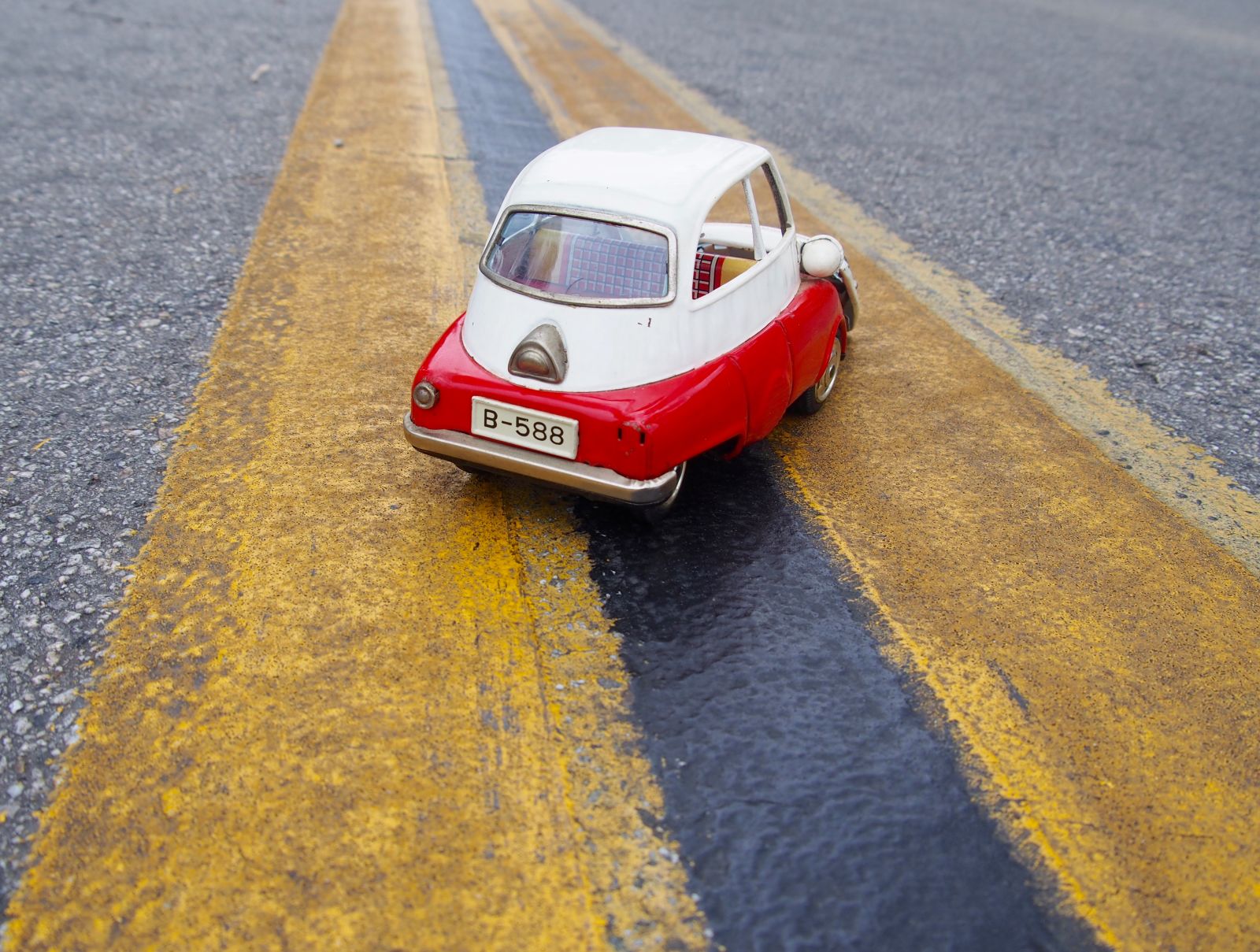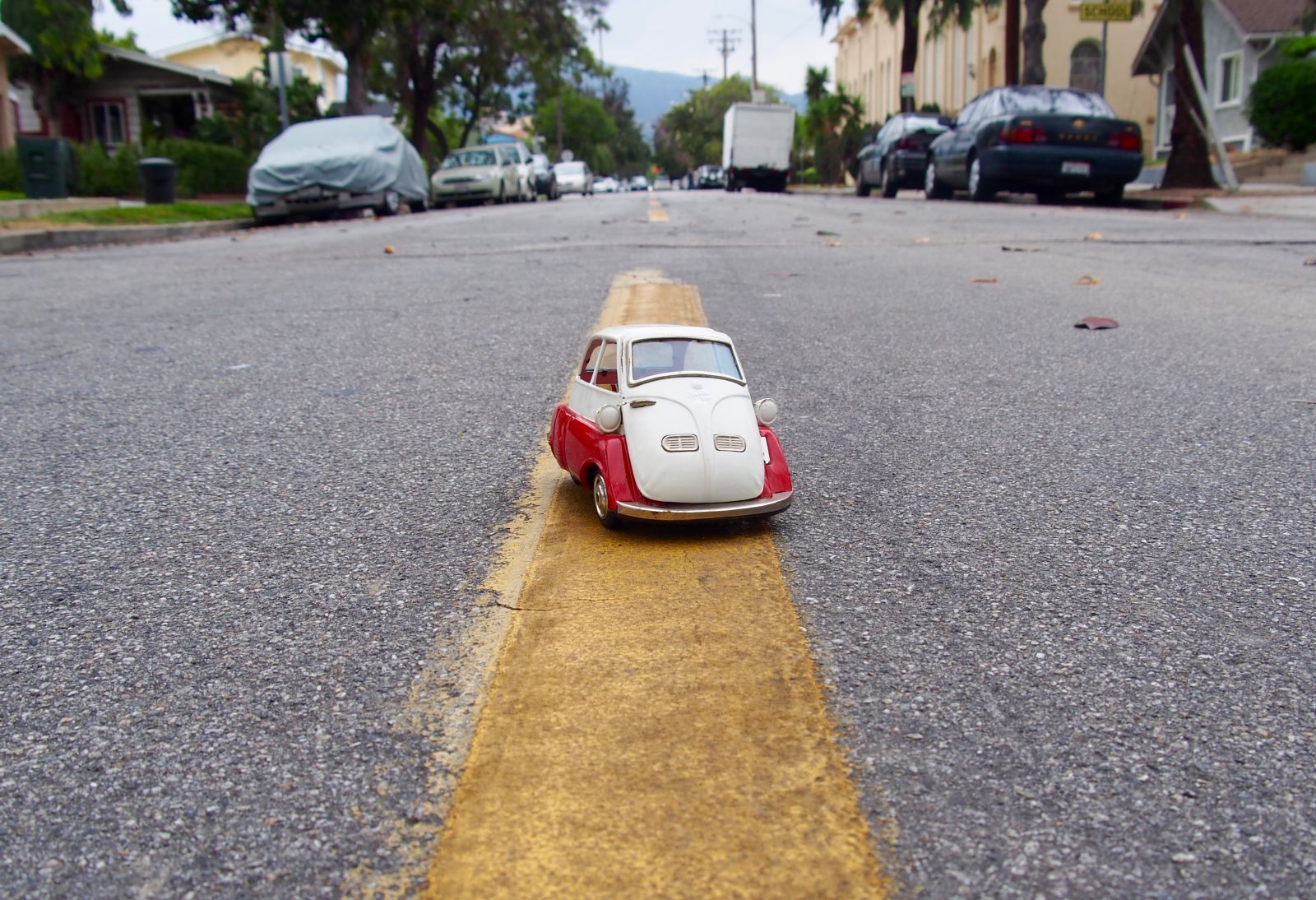
Here’s a Bandai BMW Isetta friction toy I found at a thrift store almost 20 years ago. This is the only one of these I have, but I just love them. They somehow are simultaneously realistic and utterly whimsical. I don’t know if they’re to a specific scale, but they look perfectly proportioned. This one must have been made in the late 50's, or very early 60's which would have been at the end of the Isetta’s run. It’s also interesting that you could buy these in America since they never sold very many Isettas in America.
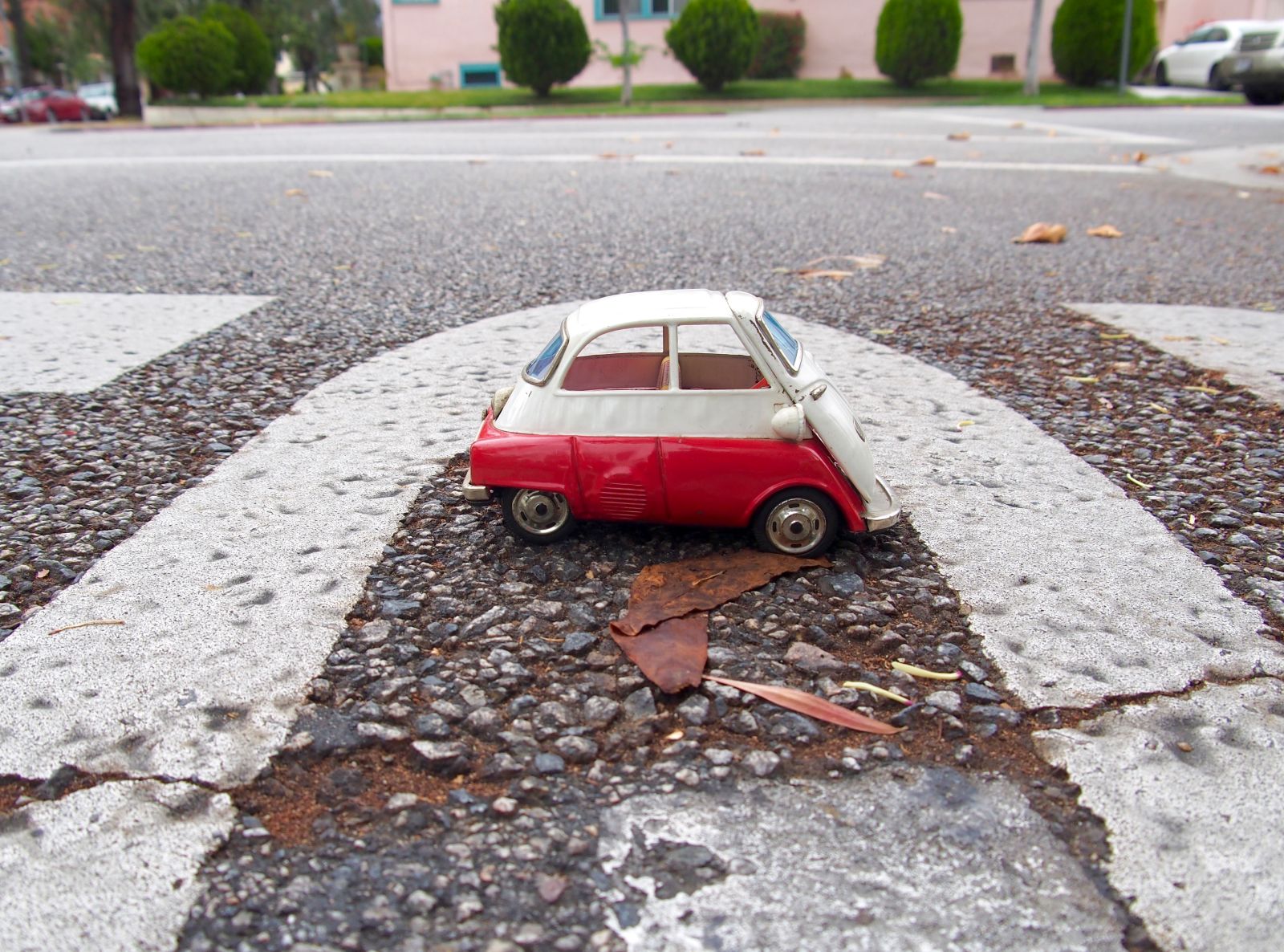
The Isetta started life in Italy as an Iso, the same company that would later give us the Rivolta and Grifo. Before WWII, Iso was manufacturing refrigerators and heaters, but after the war switched to scooters, and later cars of which, the Isetta was the first. The Isetta’s design was the brainchild of Ermenegildo Preti, a prolific builder of glider planes. I always say the Isetta looks like it was designed by someone who had never seen a car before which is not literally true, but all that time staring at planes gave Ermenegildo some interesting ideas. Like that single front door which was not inspired by Iso’s fridges, but by one of Preti’s gliders which had a hinged nose for cockpit entry.
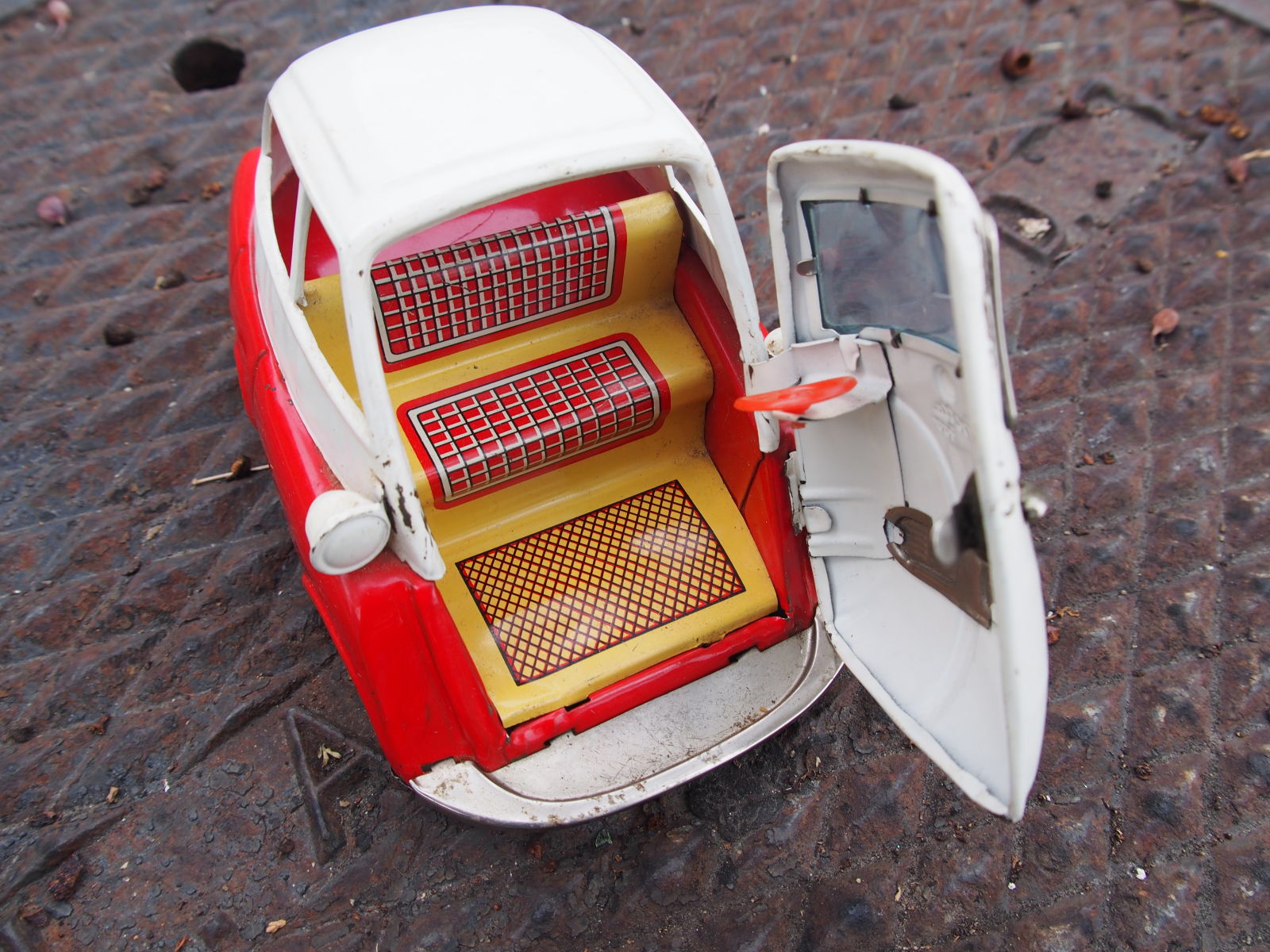
Preti wanted to build something with the smallest footprint as possible for getting around Europe’s crowded cities. The egg shape he came up with didn’t have room for side door, and with its stunted length, Preti figured a front door would be really convenient since you could park it nose to the curb and just walk out onto the sidewalk. Brilliant.
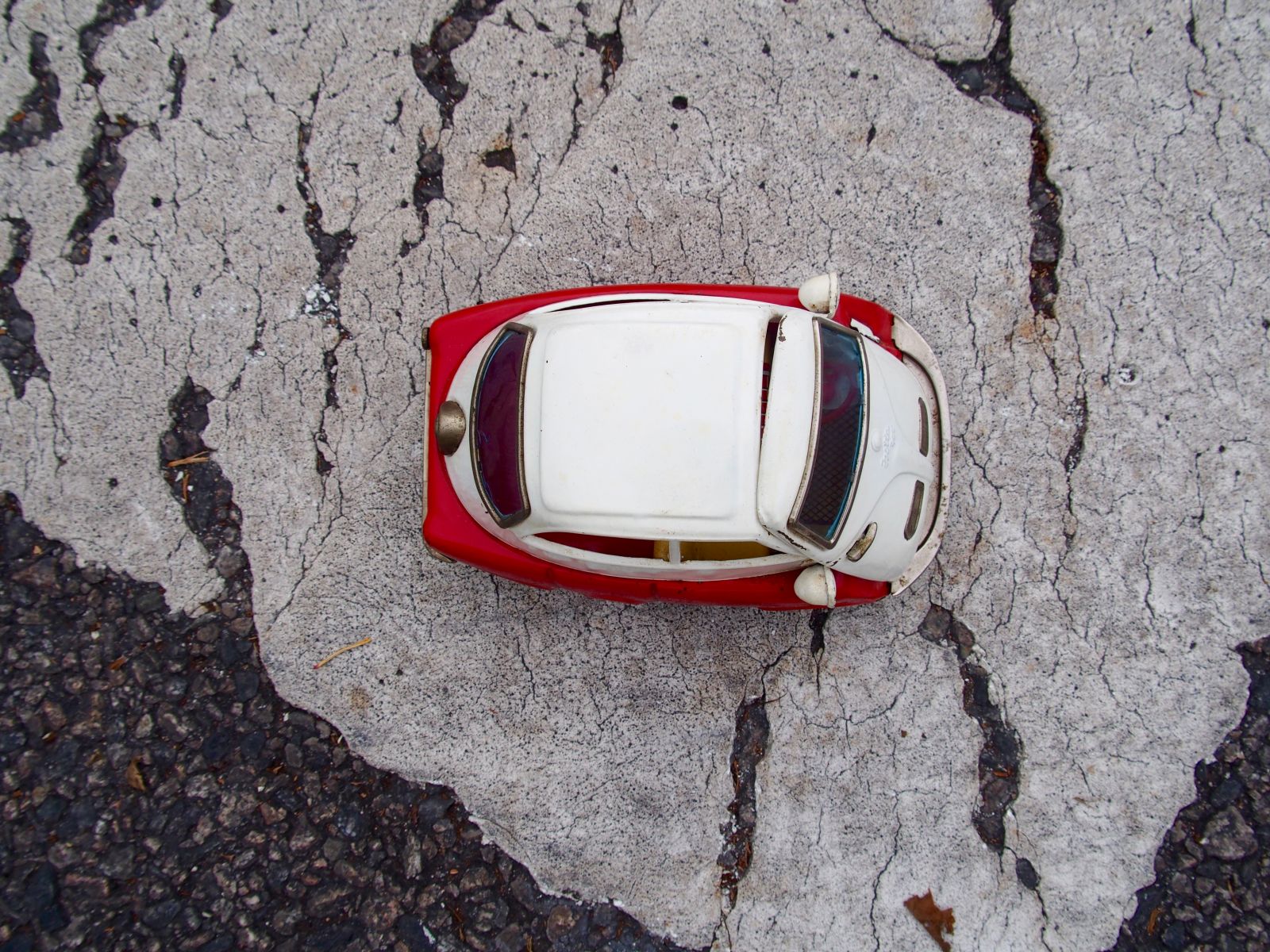
Iso’s Isetta was released in 1953 to a stupefied public. It was a radical and clever car, but couldn’t compete with Fiat’s Topolino and 600 and sales were disappointing. Over in Germany, BMW couldn’t sell enough of its elegant, but extremely expensive, V8 powered cars to a war ravaged German public to stay afloat. They needed an economy car and they needed it fast. A Swiss importer of BMW’s had seen an Iso Isetta in Milan and had a great idea. Since Renzo Rivolta, Iso’s chief, was desperate to get something out of the money he put into developing the Isetta, he was thrilled to sell a license to build it to the German company. A deal was struck and the first BMW Isettas started leaving the factory in 1955.
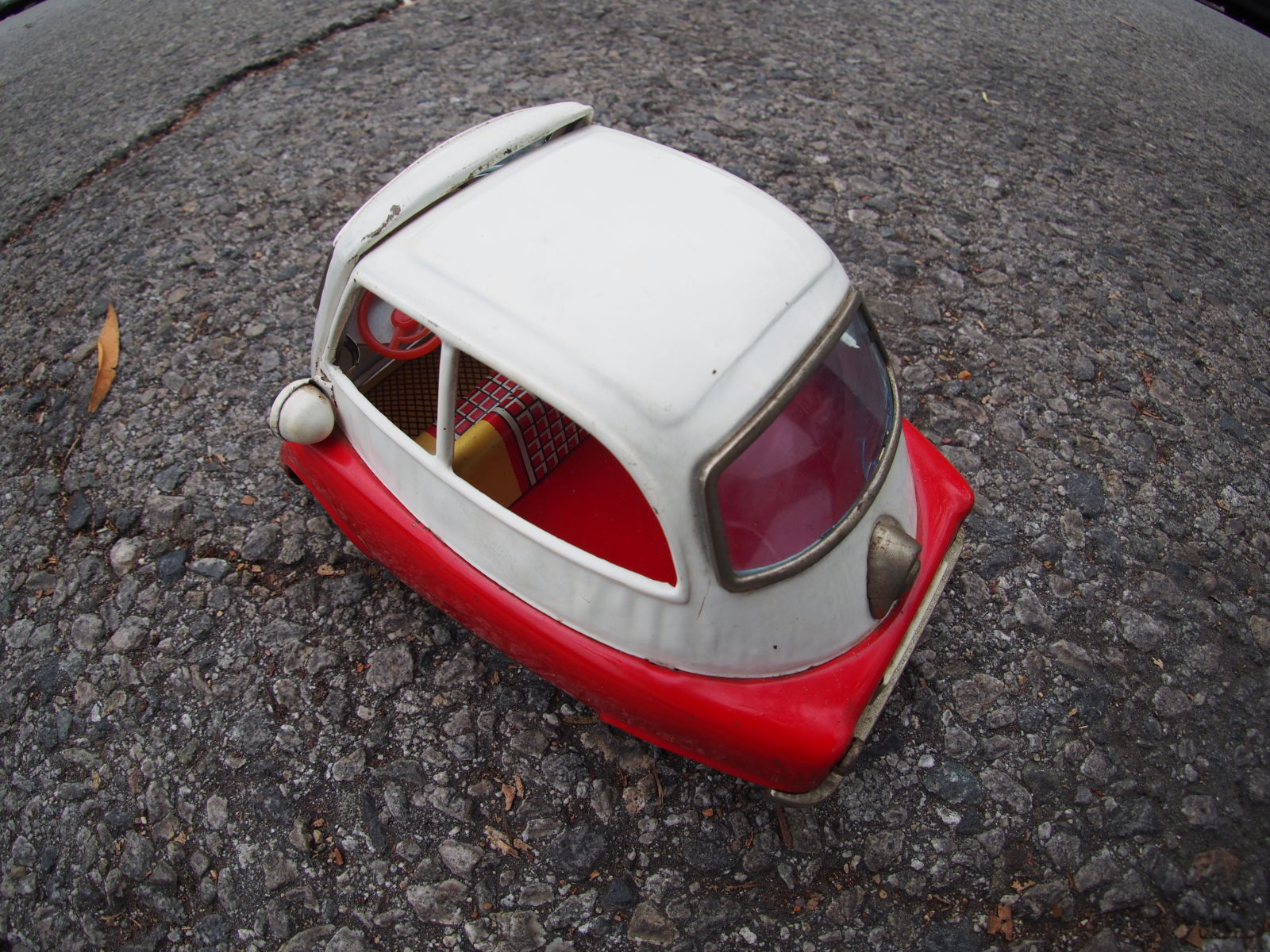
BMW made some tweaks to the car. They gave it a more robust suspension, 4 speed transmission, and a BMW single cylinder 250cc motor making 12 horsepower. For what it was, the car was comfortable, well built, and perfectly capable of transporting you around town out of the rain. It was an instant hit. The design, which caused snickering in Italy, was considered modern and hip. It was dirt cheap, priced less than some motorcycles. BMW sold over 50,000 the first year. Eventually, people would grow tired of underpowered, quirky machines, and microcars lost their market. But, at a very important time, the Isetta kept BMW’s factory running while they planned their future.
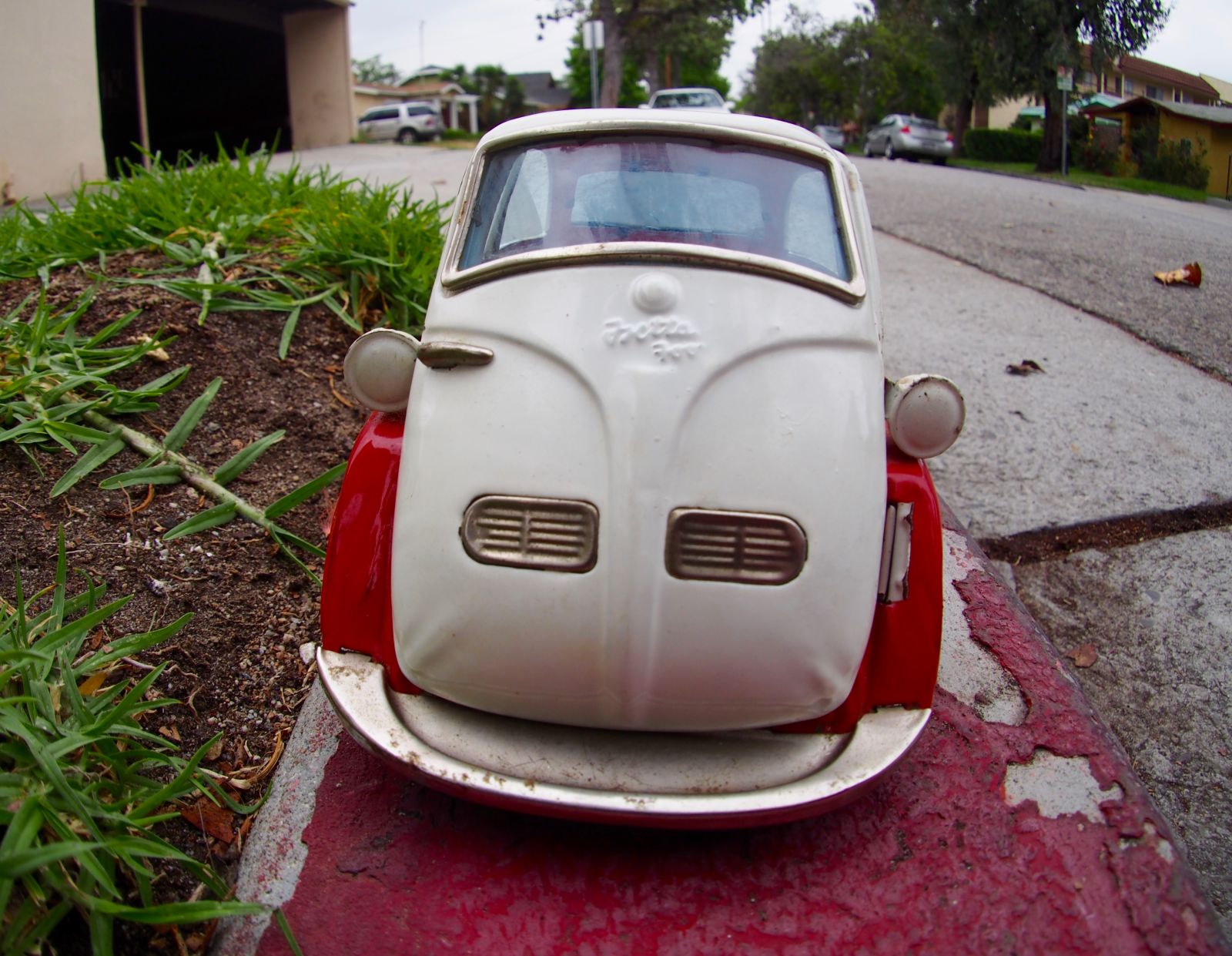
I love the way this toy is constructed. It does a great job capturing the Isetta’s charm. And the litho work is outstanding.
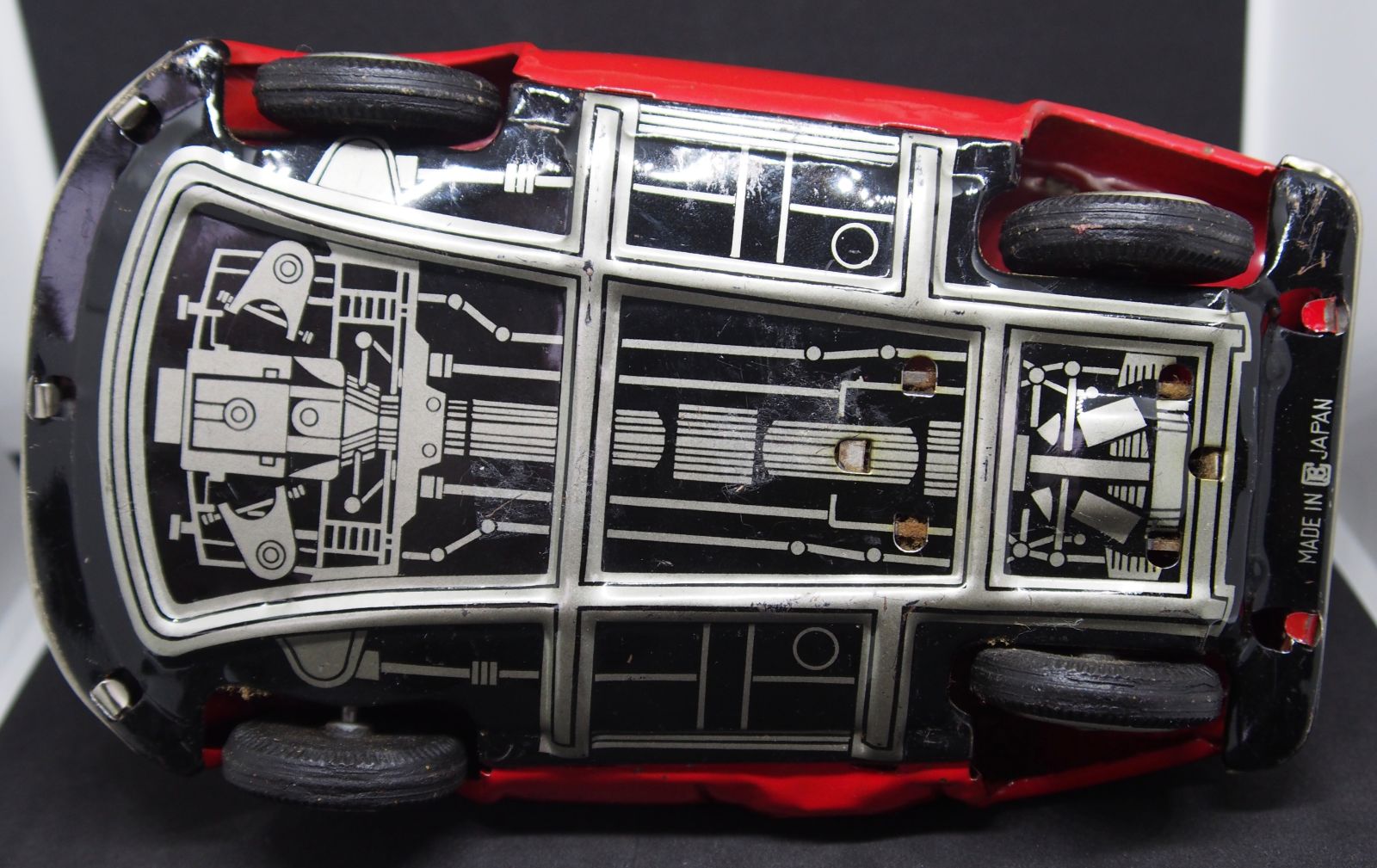
You could get tartan seats in the Isetta, but it never looked this flashy.
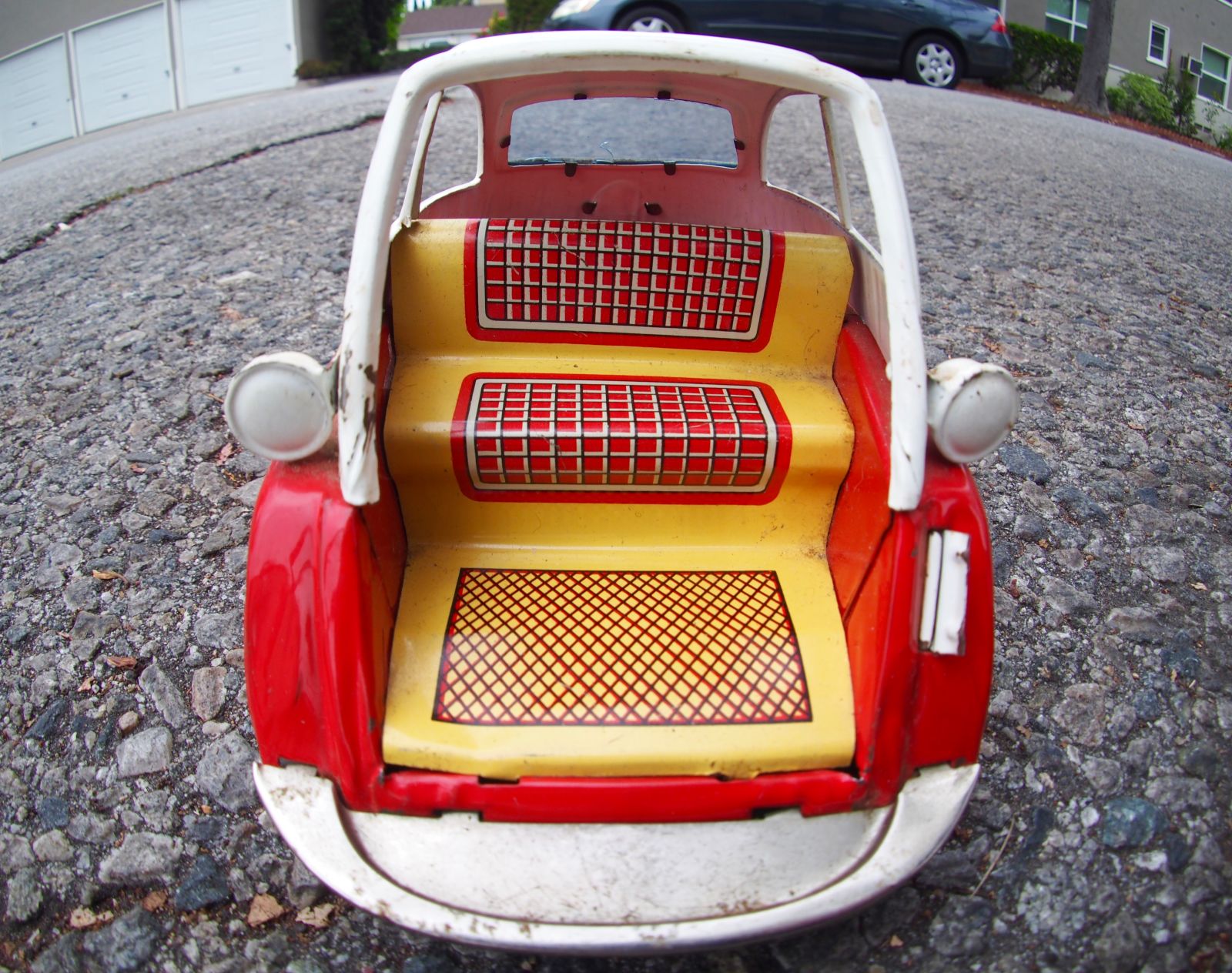
As you see, unfortunately this guy has a broken hinge which I’ve never fixed. And, it’s missing a taillight. But, the friction feature still works perfectly. The noise kind of alarms my cat, but she’s scared of everything.
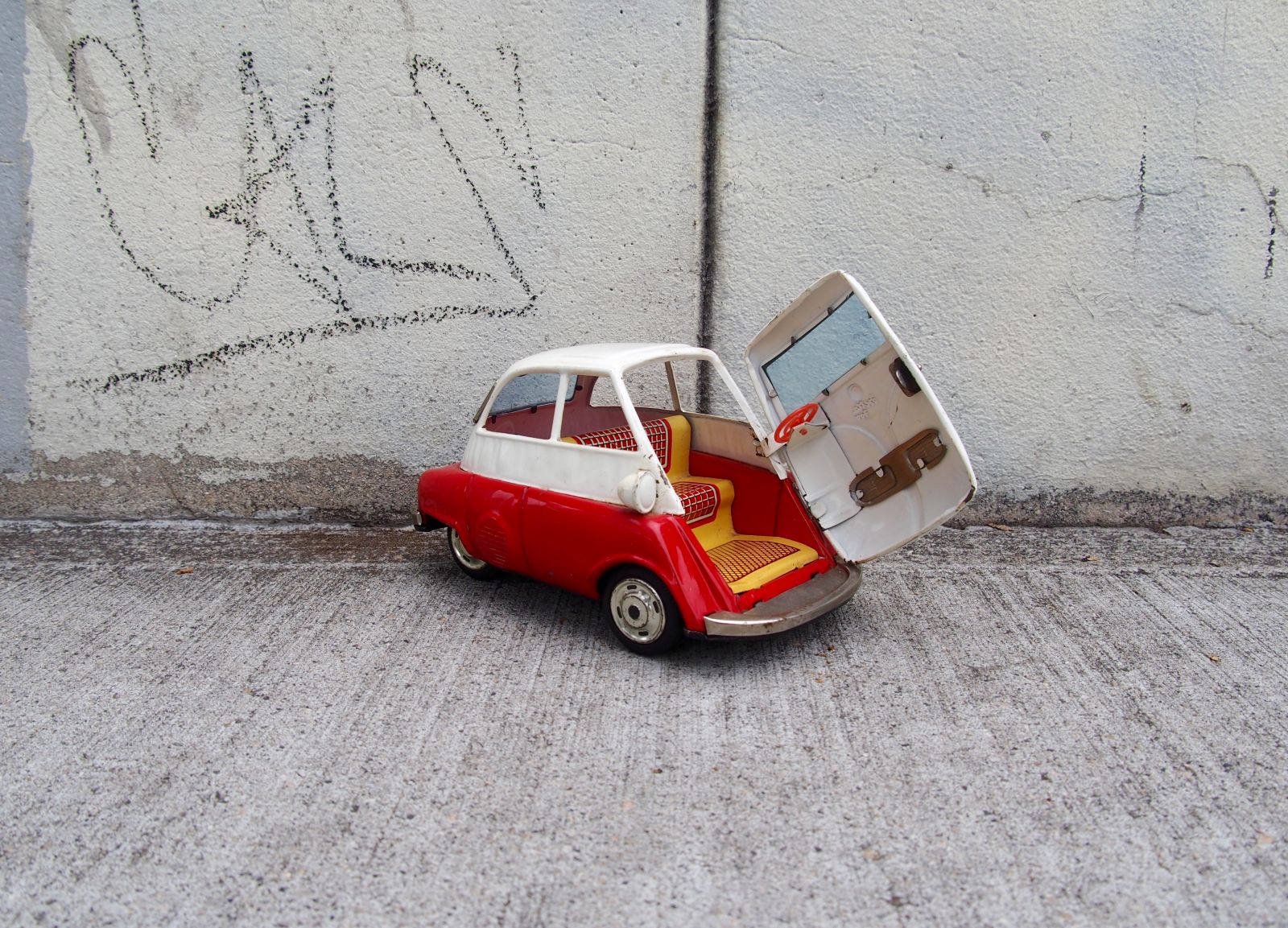
The embossing on the door makes it looks like this an Isetta “700" which is how their often listed. But, it’s really a 300 and the bottom prong on the “3" didn’t come through. (Later runs of these seem to have fixed that.) BMW started offering a larger 300cc motor in 1955. A year later, they replaced the bubble side windows with flatter windows that could slide open, finally letting some air in. That’s what we see here, although the real car didn’t have a middle pillar.
